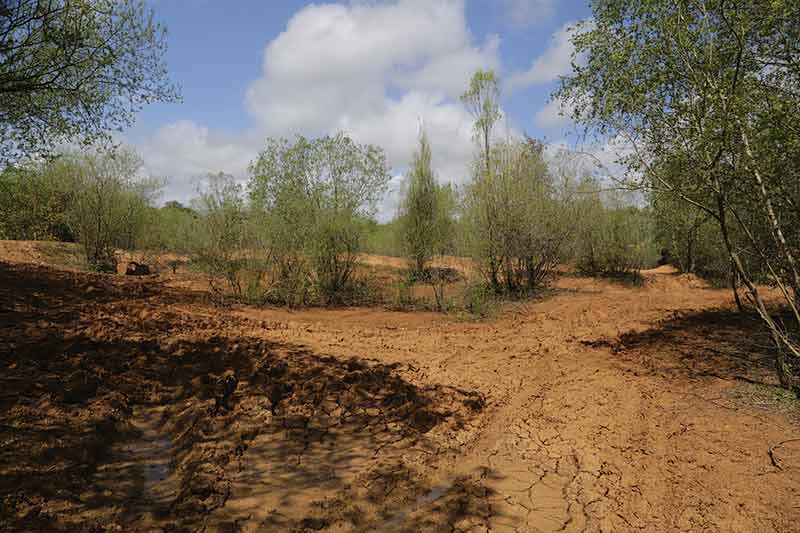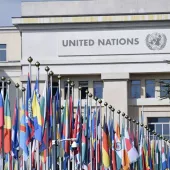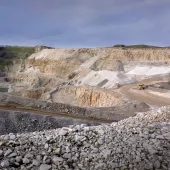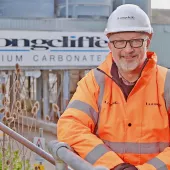The Use of Inert Waste as a Fill in Quarry Restoration

First published in the August 2015 issue of Quarry Management as: Recovery vs Disposal - A substitution for common sense
By Adrian Lynham, associate director, and Stuart Austin, principal minerals & waste planner, with WYG
How important is the use of fill material to achieve high-quality restoration of mineral sites? In the case of sand and gravel sites, the use of material to achieve an acceptable final landform and beneficial land use is fundamental to a planning authority granting planning permission for the quarry in the first place. Therefore, the beneficial use of inert waste as a source of fill (rather than utilizing higher-grade material which could be put to more sustainable uses) is central to securing the restoration of quarries that leave a positive environmental legacy. Consequently, the use of inert waste as a substitute engineering fill should constitute the recovery (rather than disposal) of waste.
However, it is becoming increasingly difficult to secure agreement to restore quarries under recovery permits, with the Environment Agency often concluding the operations constitute waste disposal. The recent Methley Quarry appeal decision1 has thrown into sharp focus the issues currently facing minerals operators in respect of the regulatory position on recovery versus disposal in the beneficial use of inert waste, and the interpretation of Article 3 (15) of Directive 2008/98/EC through the application of five questions set out in EPR 13 – Defining Waste Recovery: Permanent Deposit of Waste on Land.
In particular, the question of ‘substitution’ was central to the Inspector’s decision on Methley Quarry. The Inspector concluded that the use of inert waste to reinstate a public footpath across a water body during restoration of the quarry (as required by the Temporary Public Path Diversion Order) ‘would not be serving a useful purpose by replacing other materials which would otherwise have been used to fulfil a particular function’ and therefore failed to meet the definition of recovery under Article 3 (15).
So, what do the environmental regulators consider as ‘genuine recovery’? Noise bunds and screening bunds often qualify, and to a lesser extent golf courses and improvement to agricultural land. In these cases the substitution test is easier to demonstrate as long as a genuine need exists in respect of the individual (or company) undertaking the work. A case can be put that the work will be done with virgin material, but inert waste makes a convenient and environmentally preferable alternative. If agreement that the scheme is recovery fails to be secured the work need not go ahead (the planning permission will not force implementation), and the environment remains unchanged.
However, the application of the ‘substitution’ test to quarry restoration cannot properly be applied in an identical way to these other engineering works. The winning and working of minerals is essential in maintaining the supply of valuable natural resources upon which society relies, but the granting of planning permission for new extraction is equally contingent on the requirement to deliver a beneficial restoration scheme, and there are usually good reasons, such as landscape, ecology, hydrology, why a site is best restored to a certain profile or depth. This requirement is set out in the planning permission by way of an enforceable restoration condition. The purpose of the planning permission (and the subsequent restoration) is the extraction of mineral in an environmentally acceptable way, not the creation of a hole for the future disposal of inert waste.
This view appears to be shared by some minerals and waste planning authorities promoting the recovery of inert waste as they seek to become ‘zero waste to landfill’ through the course of newly adopted Waste Plans. The West Sussex Waste Local Plan identifies that within the county ‘large amounts of inert waste are currently being used for beneficial purposes (ie recovery) such as for quarry restoration...’. Likewise, the Hampshire Minerals and Waste Plan states that in the county ‘the vast majority, if not all, of inert waste that is disposed of to land...is for beneficial uses and is not considered landfill’. Quarry restoration is then cited as an example of the beneficial use of inert waste as recovery. As such, both West Sussex and Hampshire conclude that there is no need for new inert landfill capacity to be allocated in their Plan periods.
In Policy W8: Recovery Operations involving the Depositing of Inert Waste on Land, West Sussex actually encompasses the same five questions as those set out by the Environment Agency in EPR 13. This has the potential for one statutory authority to take a differing view from another in the interpretation of these questions and the determination as to whether a scheme is recovery or not (see Boxgrove Quarry case study).
In respect of ‘substitution’ it is the conclusion of West Sussex that at Boxgrove Quarry the ‘need’ for the restoration in terms of benefiting the landscape character establishes the principle that these works would have to occur ‘regardless of whether the material used was waste or ‘virgin’ aggregate’. This goes back to the earlier point about restoration being a prerequisite to the acceptability of mineral extraction. However, to deliver this restoration through the placement of an aggregate fill in the place of another primary mineral extracted from the site is nonsensical. It is not that the use of an alternative product to inert waste in quarry restoration is financially unviable, it is simply unsustainable. In contrast, the use of the unrecyclable fraction of inert waste as bulk fill supplemented by recycled soils for a top planting layer is a much more sustainable solution than using higher-grade material such as recycled aggregates or virgin material.
The concern is that a potential consequence of regulators’ current interpretation and application of Article 3 (15) is that the significant volumes of inert material that cannot be recycled are diverted to land-raising operations, where there is a greater prospect to secure a recovery permit, and avoid the requirements of the Landfill Directive. This may presently lead to shortages of suitable material available for use in quarry restoration, thereby extending the timescales required for completing the works and subsequent overall impacts on the environment.
In the final evaluation of these projects, which out of quarry restoration and small-scale engineering schemes is truly more sustainable, and which has the greatest capacity for enhancing the landscape and delivering environmental benefits through the creation of desired UK Biodiversity Action Plan habitats? There needs to be a shift in thinking and a greater recognition that for quarry restoration the substitution test needs to be applied to the whole of the development, not just the restoration element which is required to be undertaken in accordance with the planning permission.
Boxgrove Quarry: A case study
Boxgrove Quarry is a former hoggin ballast quarry in West Sussex. Following the cessation of quarrying operations the site was only partially restored with inert material before the planning permission lapsed and the gates closed. Inert Recycling (UK) Ltd purchased the site in 2009 with a view to completing the restoration works through the use of unrecyclable inert fill (such as clays) capped with recycled subsoil and topsoil. The 14ha site would then be planted up to create a matrix of habitats including broadleaved woodland, wetland, rough grassland and pasture.
An initial application was refused and dismissed on appeal principally as a consequence of potential visual and landscape impacts on the South Downs National Park, the boundary of which is in close proximity to Boxgrove Quarry. However, the Inspector acknowledged that the quarry would benefit from restoration and that ‘a programme of restoration was envisaged for this site as part of the last planning permission granted (for mineral extraction)’. It was also concluded that the front-end recycling to produce soils for use in the restoration ‘moves waste up the waste hierarchy’, ie away from disposal and up to recovery.
A revised planning application was submitted to West Sussex taking account of the Inspector’s comments and the evidence of the planning authority presented at the Inquiry. The revised application fell for determination under the newly adopted West Sussex Waste Local Plan which contains Policy W8: Recovery Operations involving the Depositing of Inert Waste on Land. This policy comprises nine tests, five of which replicate the questions set out in EPR 13 – Defining Waste Recovery: Permanent Deposit of Waste on Land, as used by the Environment Agency to determine whether a scheme is recovery or disposal.
In the Planning Committee Report recommending approval for the revised restoration scheme, West Sussex set out how the proposed development met the tests of: benefit; substitution; minimum amount; suitability; and appropriate standard. On this basis the application was approved in accordance with Policy W8 as a recovery scheme.
Logic would suggest that having been assessed by a planning officer (and supported by a planning committee in a public forum) against these five tests, and demonstrated to be recovery rather than disposal, that securing Environment Agency agreement to a Recovery Permit would be straightforward. However, the Environment Agency took a contrary view in reasoning that the scheme failed to meet the tests of substitution, minimum amount, and appropriate standard. The Environment Agency concluded that ‘the level of fill is not currently justified other than to meet the landform agreed through the existing planning. Where the fill depths are in access [sic] of the depths required to achieve the necessary vegetation establishment soil profile depths the additional depth of waste would only be providing void fill and would therefore not constitute a deposit for recovery’.
The inconsistency in regulatory interpretation makes it difficult for mineral operations to obtain appropriate fill material due to competition with other engineering projects, and reduces their ability to deliver the best environmental solution for wider society when extracting the minerals we all rely on.
Reference
- APP/EPR/13/118, Methley Quarry: Lafarge Aggregates against the decision of the Environment Agency
- Subscribe to Quarry Management, the monthly journal for the mineral products industry, to read articles before they appear on Agg-Net.com







